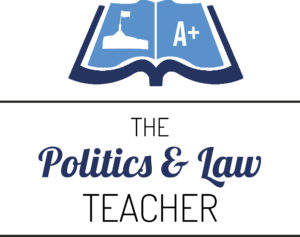“Justice without fear or favour, affection or ill-will”
The statement above was made by Lord Stephen Sedley, an English judge.
He went on to note that,
“Fear and favour are the enemies of independence, which is a state of being. Affection and ill-will undermine impartiality, which is a state of mind. But independence and impartiality are the twin pillars without which justice cannot stand”.
The Commonwealth Constitution establishes the independence of the federal judiciary in Section 72. State and Territory constitutions do the same within their jurisdictions.
Impartiality is a leading element of natural justice. It is the bedrock upon which the principle of fairness and due process is built. Impartiality shares the same rank with independence, yet it is not entrenched in constitutional law. Lord Sedley asks, “when should a judge withdraw (from a case)?”. He declares, “the short answer is…, there is no short answer” and states there is a limited body of legal principles and a great body of case law, but much of it is conflicting.
Consequently, the twin pillars of independence and impartiality are constructed of different stuff. It’s as if the independence pillar is made of constitutional granite, while the impartiality pillar is made of weaker limestone.
Judges will often recuse themselves before a trial commences if they feel they cannot bring an impartial mind to the case, meaning the public and legal professionals will never know an issue of impartiality arose. A judge with a conflict of interest, such as an investment, may declare their interests for the sake of openness and still adjudicate the case if their interest is not fatal to impartiality. In such a case, the ‘fictitious observer test’ – a legal principle – is used to decide if a judge has a connection to a case that undermines impartiality. The test asks, ‘would a fair-minded lay observer with knowledge of the facts reasonably apprehend that a judge might not bring an impartial mind to the case?’ If the answer is ‘yes’, the judge should recuse themselves. If ‘no’, they may adjudicate the case. In essence, the ‘fictitious observer test’ is the principle that justice must not only be done, it must also be seen to be done.
Impartiality becomes a public issue when one party discovers a judge has an undeclared interest or connection after a case has commenced and objects.
Charisteas v Charisteas is a long-running Western Australian family law case that highlighted the issue of apprehended bias and led to a successful High Court appeal and significant reform proposals by a leading legal pressure group. For further details, refer to Judge held accountable for apprehended bias in PAL News Update V5N4 Jul/Aug 2022.
In short, the judge presiding over the case socialised and exchanged messages and phone conversations with the wife’s barrister without the husband’s knowledge or consent. The husband discovered the connection and appealed to the High Court. The High Court ruled in his favour, saying it was “particularly troubling” and “difficult to comprehend” that [the judge] had failed to declare his communications with the wife’s barrister (see Judgment Summary here).
Responding to Charisteas v Charisteas, the Australian Law Reform Commission (ALRC) produced its report “Without Fear or Favour: Judicial Impartiality and the Law on Bias” (see here). The report makes several recommendations to strengthen the ‘impartiality pillar’ and uphold natural justice. The recommendations are:
- clarification of procedures for disqualification of judges;
- new procedures for the handling of bias applications and appeal of such decisions;
- the establishment of a federal judicial commission; and
- strengthened institutional supports for judicial impartiality, including new processes for appointing and training judicial officers.
Item 1 would better explain the procedures and principles currently used to decide if a judge should recuse themselves. Clarification enhances public confidence by raising awareness and understanding.
Item 2 seeks to improve how accusations of bias and their appeals are handled. Again, implementing this recommendation would enhance public confidence by improving understanding of how allegations of bias are handled.
The third recommendation draws on the experience of some States, most notably NSW, which have judicial commissions. The NSW Judicial Commission has ten members. Six are official members who are the heads of the State’s courts. Three people “of high standing in the community” are appointed by the State Governor on advice from the NSW Attorney-General. The final member is a member of the legal profession appointed by the Governor following advice. The commission assesses complaints against judges, magistrates and courts. It has successfully held NSW courts accountable without weakening the crucial ‘independence pillar’ or undermining the separation of powers.
Finally, the appointment of judges should include published appointment criteria and regular reporting on the diversity of the federal judiciary to ensure it is more representative of the community.
The federal Attorney–General, Mark Dreyfus, responded favorably to the ALRC report, especially the recommendation for a judicial commission to handle complaints against judges.
If implemented, as promised by the Albanese Government, these measures would boost public confidence in the federal judiciary, an essential element in the accountability of the courts.
The Western Australian government announced in September that it may implement similar reforms.

